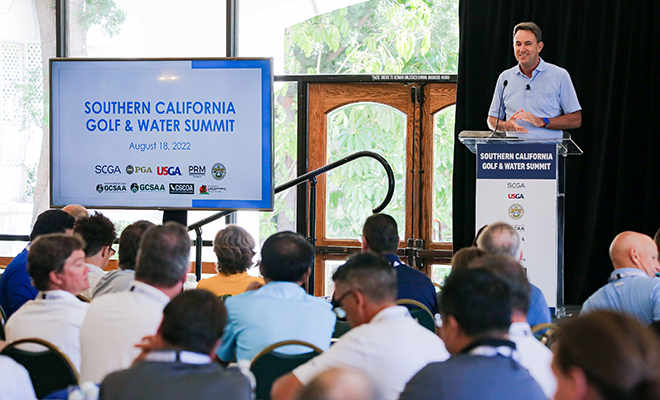The Game’s Advocacy Efforts: Still Behind the Curve but Improving Rapidly

When it comes to public policy engagement in California generally and Southern California in particular, the news is both good and bad — and the “good” and the “bad” are the same piece of news.
In the advocacy arena, the SCGA is universally acknowledged as the most organized, engaged and progressive of the nation’s state/regional golf associations. It invests more resources, pursues more initiatives and accomplishes more quantifiable results than any of its brother/sister USGA licensees. Indeed, it is among the few that even make the effort. The SCGA invests, pursues and accomplishes more than its allied industry partners in the immediate region as well, making it the undisputed leader of the game’s advocacy efforts in Southern California.
The State of California is similarly acknowledged as the national leader in advocacy. Our state’s California Alliance for Golf (CAG) brings together all of the industry’s normative leadership organizations as one for the purpose of identifying the public policy interests of the game and representing them before the various legislative and regulatory bodies that control much of the industry’s fate.
That’s the “good news.” How can being number one be anything but good?
The answer is as simple as it is instructive. California in general and Southern California in specific are the proverbial one-eyed kings in a land of the blind. We’re number one only because the rest of the nation is so myopic. There are exceptions, a few hot spots of public engagement; Texas, Georgia and Connecticut come to mind. But they pale in comparison to California’s efforts, which are more comprehensive, more organized and more unified, although not always more funded.
That’s the “bad news.” As far ahead of our counterparts as we may be, we are hardly organized well enough to deal effectively with the water, tax and regulatory challenges we face. Some of them yes, most notably water issues at the local level, but not all of them, particularly taxes and some proposed mandates of the State Water Resources Control Board that threaten to preempt some of that solid local water work.
This is not to say that the SCGA and the California Alliance for Golf are not racking up significant accomplishments and continuing to get better organized, activated and funded while doing so. Indeed, the alphabet soup of traditional nonprofit organizations that form the backbone of what has emerged as the leadership of the California golf industry — SCGA, NCGA, SCPGA, NCPGA, GCSAA, CGCOA, CMAA and SCMGA — are seriously entertaining actions that I would have categorized as unimaginable just a few years ago, up to and including seriously broaching the subject of an assessment-based California Golf Commission.
But notice that this “leadership” list does not include much if any of the state’s for-profit golf sector, i.e., all those management groups, club manufacturers, equipment suppliers, etc., that depend upon a healthy golf industry for their survival. It is going to have to include them if the “bad news” is going to graduate to the better news we want and need.
This callout is unfair. The alphabet soup of nonprofit leadership organizations made a conscious choice a couple of years ago to perform a complete reworking of the CAG governing structure and to retain better and more cost effective consulting/lobbying services before approaching the private sector for participation. The value proposition now merits that investment, and the “ask” is underway.
To put golf’s effort in context, we live in a state in which the California Realtors Association poured nearly $10 million into the 2014 elections and communication giant AT&T spent just short of $45 million on lobbying the last decade. Golf’s pennies pale in comparison.
Guile, persistence, intelligence, organization, connection, dedication, integrity — the California golf industry is awash in these attributes. That’s the good news. Money, resources and a visceral understanding of the role government plays in the fates of industries — not so much. As a $13.3 billion industry, golf is light years behind similarly sized industries. That’s the bad news. But it is getting better. And doing so rapidly.










